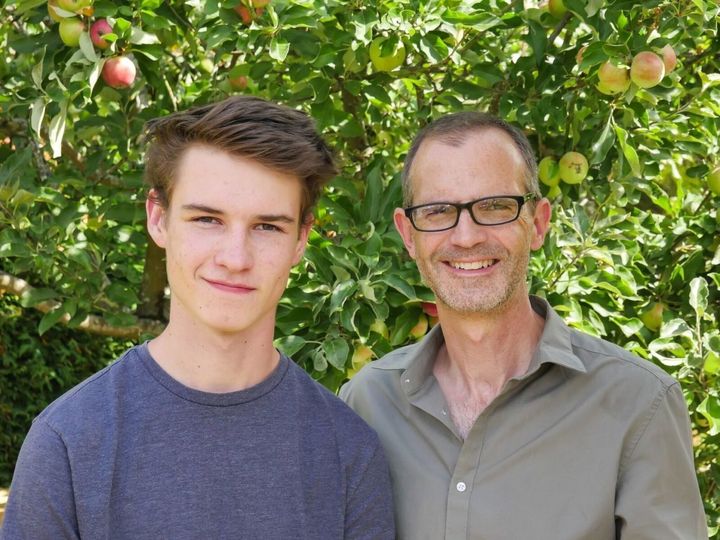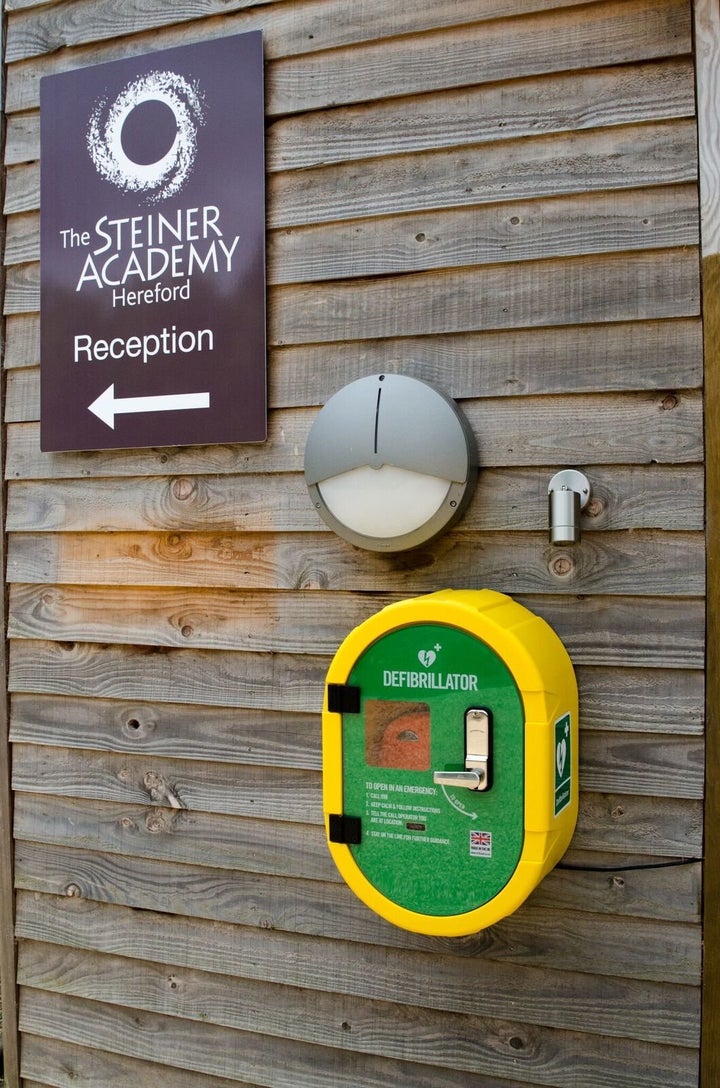When 15-year-old Ethan Askew collapsed on his school field, his dad, Stuart, was able to save his life using a defibrillator. But if you saw someone going into cardiac arrest, would you know where to find the vital equipment?
A new project will map public defibrillators across the UK to better inform members of the public and 999 call operators when emergency strikes. Information about the availability of the devices – which give a high energy electric shock to the heart – is currently patchy, and not all are known to ambulance services. Currently, when a member of the public calls 999 after finding someone whose heart has stopped, they might not be directed to where they can find a publicly available defibrillator.
Dad Stuart, 46, has praised the new initiative, which is a collaboration between The NHS, the British Heart Foundation (BHF) and Microsoft . “We were lucky that we knew there was a defibrillator nearby – I know many people aren’t as lucky,” he said. “It’s brilliant to know that the BHF will be working with Microsoft and the NHS to ensure that defibrillators across the country are mapped, so they can help to save people like Ethan.”
[READ MORE: How to respond to cardiac arrest]

The BHF has estimated “thousands more lives could be saved” from cardiac arrests if the locations of all defibrillators are known to emergency call handlers. Previous research has found that just 3% of patients who suffer cardiac arrests that happen outside of hospital are treated with public access defibrillators, which the charity says significantly reduces the survival chances of tens of thousands of people every year.
Stuart used a public access defibrillator on his son Ethan last April after the 15-year-old collapsed on the school field. The dad, who works as a premises manager at Steiner Academy in Hereford – the same school attended by his son – had helped to set up a defibrillator just two days previously.
After running across the field to find the school receptionist performing CPR on his son, Stuart called on Ethan’s classmates to retrieve the defibrillator – which the school had after making a successful application to the BHF for a community defibrillator for the village. He then used the device on his son.
The teen has now made a complete recovery, following surgery to treat a narrowed artery, which was caused by a genetic condition.
“It was without a doubt the scariest day of my life,” said Stuart. “The realisation of what was happening only hit me as I ran across the school field and could see that someone was performing CPR on Ethan, my son.
“Thankfully CPR had been started quickly. I had installed the batteries in the defibrillator just two days earlier, and quickly called for a group of his classmates to run and get it. I know that without the CPR and defibrillator, Ethan wouldn’t have survived.
“I’ve had so many ‘what if’ moments since it happened. What if no-one had known CPR? What if the defibrillator hadn’t arrived in time? What if I hadn’t put the batteries in when I did?”

Tens of thousands of defibrillators are placed prominently in workplaces, train stations, leisure centres and public places across the country. The BHF said that one of the biggest barriers to their use is that the location of the devices is often unknown. The new project will see a comprehensive map of defibrillators across the UK created over the next 12 months.
There are more than 30,000 out-of-hospital cardiac arrests every year in the UK, but fewer than one in 10 people survive. In countries where the public are better equipped to recognise and deal with cardiac arrests, survival rates are up to three times higher, the BHF said.
A cardiac arrest occurs when a person’s heart suddenly stops pumping blood around their body, which can starve the brain of oxygen and lead to a person falling unconscious and stopping breathing.
“This innovative project will give every ambulance service immediate access to the location of defibrillators in their areas, so they can direct bystanders to their nearest life-saving device in the event of a cardiac arrest,” said Simon Gillespie, chief executive at the BHF.
The scheme will be piloted by West Midlands Ambulance Service and the Scottish Ambulance Service, before being rolled out across the UK.